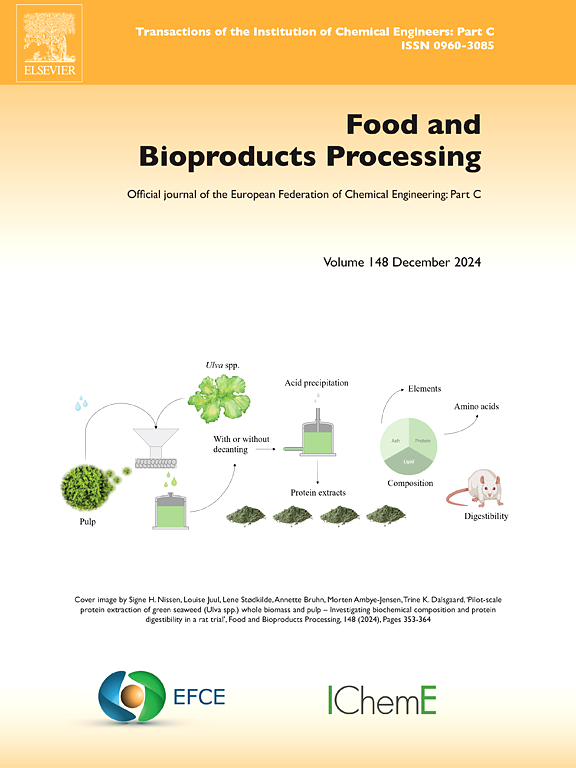High-pressure foaming of pizza
IF 3.5
2区 农林科学
Q2 BIOTECHNOLOGY & APPLIED MICROBIOLOGY
引用次数: 0
Abstract
A novel breadmaking method via physical foaming was recently developed on the laboratory scale, in which a well-defined pressure history is applied to a dough at a high temperature, ensuring at the same time leavening (here, foaming) and baking. To make the scale-up possible, however, a deeper understanding of the process is needed, specifically in relation to how physical foaming affects the mechanism of bubble formation in dough (aeration vs nucleation) and how each of the processing parameters affects the final baked product. In the present work, we get insights into bubble dissolution happening as a consequence of the application of pressure, and we meticulously study the effect on the final volume and morphology of the process parameters, namely, saturation time, maximum pressure and pressure drop rate. In the case of the saturation time and pressure drop rate, a non-linear influence is observed in the analyzed experimental range, while the final volume shows an expected monotonic increase with the highest applied pressure. The effectiveness of the method and the possible extension to a pilot scale are also discussed.
求助全文
约1分钟内获得全文
求助全文
来源期刊

Food and Bioproducts Processing
工程技术-工程:化工
CiteScore
9.70
自引率
4.30%
发文量
115
审稿时长
24 days
期刊介绍:
Official Journal of the European Federation of Chemical Engineering:
Part C
FBP aims to be the principal international journal for publication of high quality, original papers in the branches of engineering and science dedicated to the safe processing of biological products. It is the only journal to exploit the synergy between biotechnology, bioprocessing and food engineering.
Papers showing how research results can be used in engineering design, and accounts of experimental or theoretical research work bringing new perspectives to established principles, highlighting unsolved problems or indicating directions for future research, are particularly welcome. Contributions that deal with new developments in equipment or processes and that can be given quantitative expression are encouraged. The journal is especially interested in papers that extend the boundaries of food and bioproducts processing.
The journal has a strong emphasis on the interface between engineering and food or bioproducts. Papers that are not likely to be published are those:
• Primarily concerned with food formulation
• That use experimental design techniques to obtain response surfaces but gain little insight from them
• That are empirical and ignore established mechanistic models, e.g., empirical drying curves
• That are primarily concerned about sensory evaluation and colour
• Concern the extraction, encapsulation and/or antioxidant activity of a specific biological material without providing insight that could be applied to a similar but different material,
• Containing only chemical analyses of biological materials.
 求助内容:
求助内容: 应助结果提醒方式:
应助结果提醒方式:


